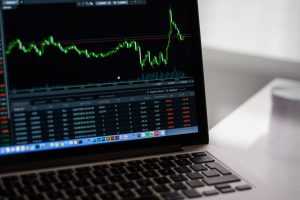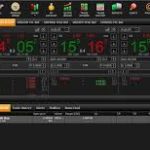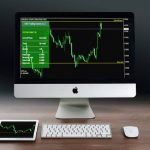What is the Definition & Meaning of Liquidity in the Forex Market?

Investors and entrepreneurs who are new to online forex & CFD trading are often bombarded with terminology that can be intimidating at times. It’s one of the reasons we developed our Forex Trading Glossary since we found it has helped newcomers to the FX market clear up much of the confusion surrounding the lingo around forex & CFD trading.
An example of a term that can be confusing upon first glance is the phrase liquidity. As we’ll soon discover, liquidity is a service that is an essential component for any forex broker to properly operate.
The term liquidity most likely conjures up images of waterfalls, rivers or perhaps a faucet. Obviously, liquidity in the FX market has nothing to do with either plumbing or nature, although there is some correlation in the name itself, as we’ll shortly discover.
What is the Meaning of Liquidity in the Forex Market? – The Definition of Liquidity
To get started, let’s provide a simple definition of the term liquidity in the forex trading market. As you’ll soon discover, the concept of liquidity is not as intimidating as it may appear at first glance. A basic definition of liquidity is both the pricing and execution of trades in a forex broker’s trading platform.
Let’s consider a simple analogy to further help one understand the definition of liquidity in the FX market. Imagine turning on the water in your bathroom or kitchen, only to discover that the faucet is not working. Keep this image in your mind and now think of launching your favorite FX trading platform, except when you go to check the live market rates, you discover the prices aren’t moving at all. Similar to the water faucet not working, when the prices do not move in a trading platform, there is an issue with the broker’s feed, which is the responsibility of the liquidity provider to fix.

Further Understanding Liquidity in the Forex & CFD Market
In essence, liquidity refers to the price stream that is constantly being updated in your FX broker’s trading terminal. Note that liquidity isn’t limited to forex pairs but also CFDs and even crytpocurrencies. When prices aren’t moving in the a forex broker’s trading platform, as in our prior example, then the broker is most likely having a connection problem with its liquidity provider.
It’s important to emphasize that liquidity is more than just pricing; it’s also the execution of the orders you see flashing on your screen. Simply put, order execution is what happens when a trader buys or sells any forex pair, stock, or CFD.
Once the order is placed in the trading platform, it must be routed to either a bank, hedge fund, or other clearing party which are collectively known as liquidity providers. When the LP (liquidity provider) receives the trade request, known as confirmation, it is then executed and routed back to the broker. The trader, who placed the order, will then the open trade in their platform. What’s amazing is that this entire scenario described above will happen in a matter of milliseconds!
Forex Consulting Services – Your Guide to Understanding the Forex Trading Market
We hope our definition of liquidity in the forex market helped you to better understand its meaning. If you would like to explore other terms, make sure to check out our Forex Trading Glossary where we provide helpful answers for some of the most common inquiries found when trading forex.
Finally, if you are new to trading and require guidance in selecting the broker that’s right for you, make sure to reach out to our team of consultants. We are more than happy to explore your specific needs further. We look forward to hearing from you!
What is the Definition of a White Label in the Forex Trading Market?

Our team of FX consultants speak to new investors on nearly a daily basis about the nuances of trading forex & CFDs. Because many of the traders who contact us are newcomers to the world of FX trading, we are often asked for a simple way to define forex white label technology.
You may be surprised to discover that the meaning behind forex white label technology is quite simple: A forex white label can be defined as the trading software that forex brokers use to run their business. If you’ve ever logged into a live or demo forex trading account, you may not realize it, but you’ve already had experience working with a forex white label.
Understanding Forex White Label Platforms & Technology
To dig a bit deeper, the term “white label” refers to the branding, or labeling of forex trading technology. In many cases this technology may be MT4 & MT5 but there are other platforms available as well. In order to properly understand the definition of a forex white label, let’s think about where the name originated from. The term “white label” borrows its name from products that you see on the shelf of your supermarket or grocery store.
Whether it is forex trading, or any business for that matter, if you don’t market your product, then why would any customer consider buying it? As we all know, it’s important to promote any product in order to catch the eye of customers. This concept is no different when trading forex.
Taking this example further, imagine a row of canned goods at the supermarket with fancy labels. Now you stumble across one can without any branding or label on it. Let’s imagine that it’s a gray can sitting next to all the labeled products. Why would any shopper in our example choose the unbranded can over the others with fancy labels? For that matter, what would the consumer even know about what’s inside the can? The answers to these questions should help to illustrate the importance of a white label to the overall success of a forex broker.
Selecting the Best Forex White Label Provider Requires Careful Thought

White label technology is an indispensable component to any new forex brokerage; without a software platform for your clients to trade with, there is no realistic way to grow a forex brokerage business. A challenge that new forex brokerages face is to form a partnership with a reputable and financially sound white label technology provider. Similar to selecting a liquidity provider, it is important to carefully evaluate the firm you ultimately decide to partner with before launching the business.
As a final thought, the most popular white label providers have partnered with MetaTrader 4 (MT4) or MetaTrader 5 (MT5). Although MT4 and MT5 are the most recognized trading platforms in the forex trading industry, there are other forex white label software providers besides MetaQutoes to consider. If you are interested in exploring some alternatives to MT4 or MT5, we are happy to show you some options to evaluate.
Forex White Label Solutions Powered by the Forex Consulting Team
With decades of experience in the forex & CFD trading industry, the Forex Consulting team is the ideal partner to help you successfully launch your own forex white label. Not only do we provide the technology needed to successfully launch a forex white label, we can also offer you access to several liquidity providers, give assistance with the creation of a website and also provide access to a CRM backend for your end users.
To learn more about how much a forex white label costs, discover the white label trading platforms that are available for leasing, and to further explore liquidity provider options, don’t hesitate to contact us.
What is Slippage in the Forex (Foreign Exchange) Market?

Slippage is one of the many bits of lingo you’ll often hear investors speak about when they are trading in the forex market. Like any niche industry, the world of forex & CFD trading is filled with a variety of acronyms and terminology that can often be confusing to newcomers.
One of the reasons we created our Forex Trading Glossary is to help new traders more easily navigate the many new terms and industry jargon they will come across when trading forex & CFDs. If you find this article helpful, make sure to check our glossary for more answers to your questions. Getting back to the subject of When it comes to the concept of slippage, it turns out that it’s not as complicated of as you may have initially thought.
For those curious about understanding the meaning of slippage in the forex market, we’ll demystify the concept by providing some basic examples to help drive across the point. Let’s start by defining what slippage is.
How is Slippage in the FX Market Defined?
A simple definition of slippage in the forex market is the execution of a market order, or stop order at a different price than what was requested by the trader. For example, let’s say you decide to buy EUR/USD at the current market price of 1.2500 but your trade gets executed instead at 1.2510 (10 points worse than the requested price). In this hypothetical example, you experienced 10 points of what we’ll refer to as negative slippage.
Due to the fact that the order in the example above was not filled at the requested price, rather a price that was slightly worse, is why this concept is known as slippage. It’s important to highlight that slippage doesn’t always have to be negative. In fact, slippage can work in the favor of traders as well. The most common form of what’s referred to as positive slippage often happens when using limit orders, something we’ll discuss at greater length in a little bit.
Why Does Slippage Occur When Trading Forex & CFDs?
Slippage is common in all markets, not just the forex industry. Those new to forex trading, however, will often associate slippage with broker manipulation. Now, it happens to be correct that unregulated forex brokerages are often guilty of fixing the market against their clients, however, it would be wrong to assume slippage is ever and always a manipulative tactic used by greedy brokers. As mentioned, this is a concept not limited to the FX market but all types of trading products such as futures, stocks, and bonds.
The reason slippage occurs is the fact that there simply is not an unlimited amount of liquidity, also known as pricing availability, at each specific price level in the FX market, or any market for that matter. When there is no supply, also known as liquidity, at the price rate you’ve requested, then the market must adjust to the next available price level.

Understanding the Meaning of Slippage in the Forex Market
Now that we have defined slippage, an example should help to better understand how this concept works in practice. When trading currencies, the interest rate that central banks offer has a significant impact on the future price of the asset. The reason is that as the interest rate rises, it becomes advantageous to shift money into the currency offering a higher yield and away from a currency offering a less competitive yield.
Because of this simple fact, currency prices will often exhibit extreme movements when central banks either lower or raise their interest rates. For example, let’s imagine you were trading GBP/USD just minutes before a scheduled interest rate announcement. Before the news, the price of GBP/USD was at 1.3700. The announcement is then released, namely that the Bank of England increased their target rate by 75 basis points, sending GBP/USD to 1.4000 in a matter of seconds.
The hiking of interest rates is bullish news for a currency, which is why the price of the British pound went up in our example. With such positive news, would you consider selling GBP/USD? Obviously not. This is why the price spiked, or jumped all the way to 1.4000
It’s clear that selling at 1.3700 makes no sense but at some point the price will become too high, prompting sellers to enter the market. Given the example above, how does slippage factor into the equation?
Well, If you were attempting to trade around this news announcement, you’d most likely experience slippage. Why? Because nobody would be willing to sell to you at 1.3700 for the reasons previously mentioned. The way all markets function is that if you want to buy, you must find a seller, and vice versa. For this reason, if you had a trade at 1.3700 and attempted to place a buy order around the announcement, you most likely would have experienced slippage, and as a result received a worse price for your order.
The example above illustrates one of the main reasons why placing trades around news announcements can be highly risky. As a final thought, if you had set a limit or take profit order in same example, you may receive what’s known as positive slippage because the order would be closed at the next available price, which often is better than the price you requested.
Do You Require Further Guidance? Don’t Hesitate to Contact Our Team of Forex Industry Consultants Today!
We hope the examples in today’s article were useful in helping you to better grasp the concept of slippage when trading forex. If you are interested in learning more about trading the FX market, or are simply looking for a reputable forex broker to open an account with, the Forex Consulting team is more than happy to assist you further.
To schedule a call with one of our seasoned FX consultants, don’t hesitate to reach out to us today!








